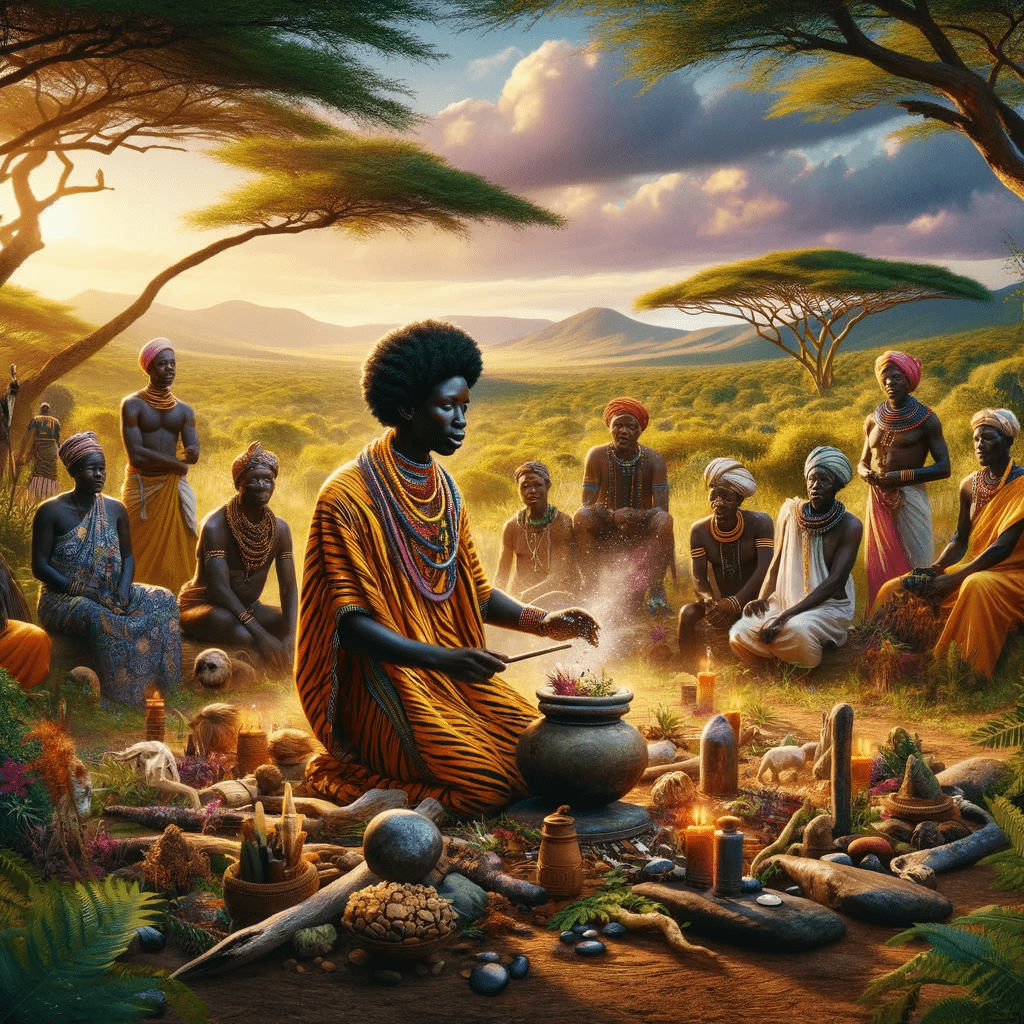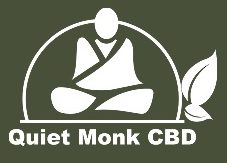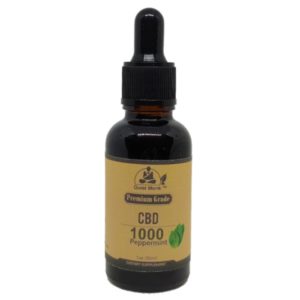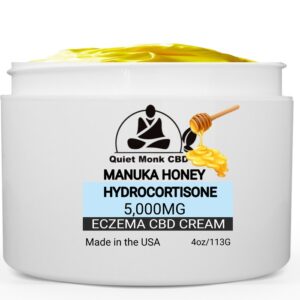
The use of CBD in traditional medicine is not a recent phenomenon and has been used for centuries in various healing practices.
Some of the traditional uses of CBD include:
- Pain relief: CBD has been used to relieve pain and inflammation in traditional medicine.
- Anxiety and depression: It has been used as a natural remedy for mental health conditions.
- Neuroprotective properties: CBD has been utilized to protect and improve brain function.
- Anti-inflammatory effects: CBD has been used to reduce inflammation and promote healing.
The use of CBD in traditional medicine can be traced back to ancient civilizations such as China, India, and Africa. These cultures utilized the medicinal properties of the cannabis plant in various forms, such as herbal remedies and topical treatments.
In modern times, CBD has gained recognition for its potential benefits in traditional medicine. Some of the current uses of CBD include:
- Pain management: CBD is commonly used to alleviate chronic pain and discomfort.
- Mental health treatment: CBD has been studied for its potential in managing anxiety, depression, and other mental health conditions.
- Cancer treatment: Research has shown that CBD may have anti-cancer properties and can help alleviate symptoms of cancer treatment.
- Skin conditions: CBD has been used to treat various skin conditions, such as eczema and psoriasis.
The potential benefits of using CBD in traditional medicine include a more natural and holistic approach to healing, fewer side effects compared to traditional pharmaceuticals, and a better understanding of traditional healing practices.
However, there are also risks associated with using CBD in traditional medicine, including lack of regulation and standardization, potential drug interactions, and the potential for misuse and abuse.
In conclusion, while the use of CBD in traditional medicine has a long history, it is important to consult with a healthcare professional and use it responsibly to reap its potential benefits.
Kratom, like CBD, has been traditionally used for centuries in various cultures for its potential health benefits. This natural plant extract, derived from the leaves of the Mitragyna speciosa tree, is known for its ability to enhance mood, relieve pain, and boost energy levels.
Many users find that incorporating kratom into their wellness routines provides a more balanced and holistic approach to managing stress and maintaining mental clarity. However, just as with CBD, it is crucial to source kratom from reputable suppliers such as Bumble Bee Botanicals, where you can be assured of the quality and authenticity of the product. Responsible usage and informed decisions are key to harnessing the potential benefits of kratom for a healthy mind and body.
Key Takeaways:
Early traditional uses of CBD include pain relief, anxiety and depression treatment, neuroprotective properties, and anti-inflammatory effects. CBD has been used in ancient Chinese, Ayurvedic, Native American, and African traditional medicine. Modern uses of CBD in traditional medicine include pain management, mental health treatment, cancer treatment, and skin conditions.
What Is CBD?
CBD, also known as cannabidiol, is a naturally occurring compound found in the cannabis plant. It is just one of the many cannabinoids found in cannabis and has become popular for its potential therapeutic benefits. Unlike THC, another cannabinoid found in cannabis, CBD does not cause a “high” and is non-intoxicating. It is believed to interact with the body’s endocannabinoid system, which helps regulate various physiological functions.
CBD can be found in various forms, such as oils, capsules, creams, and edibles, and is commonly used to manage pain, reduce anxiety, improve sleep, and promote overall well-being.
What Are The Traditional Uses Of CBD?
Throughout history, CBD has been used in various traditional healing practices to treat a wide range of ailments. In this section, we will take a closer look at the traditional uses of CBD and how it has been utilized to address different health concerns. From pain relief to anxiety and depression, neuroprotective properties to anti-inflammatory effects, we will uncover the diverse ways in which CBD has been incorporated into traditional medicine. Let’s explore the rich history of CBD and its therapeutic applications.
Pain Relief
- To experience targeted pain relief, apply a topical CBD ointment or cream directly to the affected area.
- For general pain or chronic conditions, ingest CBD oil or capsules orally.
- For longer-lasting pain relief throughout the day, try CBD edibles or beverages.
- For fast-acting pain relief, consider vaping or smoking CBD, but be sure to consider potential respiratory risks.
- It is always best to consult with a healthcare professional to determine the appropriate CBD dosage and method of administration for your specific pain relief needs.
Anxiety and Depression
Ancient healing practices have long recognized the potential of CBD in managing both anxiety and depression. CBD interacts with receptors in the brain, promoting a sense of calm and reducing symptoms associated with these conditions. Traditional medicines such as Ayurveda and Native American healing have utilized CBD for its mood-stabilizing properties. In modern traditional medicine, CBD is increasingly used to alleviate anxiety and depression, providing a natural and holistic approach with fewer side effects compared to pharmaceutical medications. It’s important to note, however, that CBD should be used under medical supervision due to potential drug interactions.
Fun Fact: CBD’s potential benefits for anxiety and depression have led to its inclusion in various wellness products like oils and capsules.
Neuroprotective Properties
Neuroprotective properties of CBD have been extensively studied for their potential benefits in traditional medicine, particularly in the treatment of neurological disorders.
- Step 1: Research suggests that CBD may have the ability to protect the brain against damage and reduce inflammation.
- Step 2: It has shown promise in managing conditions such as epilepsy, multiple sclerosis, and Parkinson’s disease.
- Step 3: CBD’s interaction with the endocannabinoid system and its ability to regulate neurotransmitter function may contribute to its neuroprotective effects.
- Step 4: However, further research is necessary to fully understand the mechanisms and effectiveness of CBD in treating neurological disorders.
- Anti-Inflammatory Effects
CBD has been found to have anti-inflammatory effects that can be beneficial for various health conditions. Here are some steps on how CBD can help with inflammation:
- Reduces inflammation: CBD interacts with the body’s endocannabinoid system to decrease inflammation and provide relief.
- Suppresses immune response: CBD can help regulate the immune system, preventing it from overreacting and causing excessive inflammation.
- Manages pain: By reducing inflammation, CBD can alleviate pain associated with inflammatory conditions such as arthritis.
- Promotes healing: CBD’s anti-inflammatory properties can accelerate the healing process by reducing swelling and promoting tissue repair.
In traditional medicine, CBD was historically used to treat conditions characterized by inflammation, such as rheumatoid arthritis and inflammatory bowel disease.
How Was CBD Used In Traditional Medicine?
Throughout history, CBD has been used in various forms for its healing properties. In this section, we will dive into the early uses of CBD in traditional medicine, exploring how different cultures and civilizations incorporated this natural remedy into their healing practices. From ancient Chinese medicine to Native American healing practices, we will examine the rich history of CBD and its role in promoting health and well-being. Join us as we uncover the diverse ways CBD was utilized in traditional medicine.
Ancient Chinese Medicine

Ancient Chinese Medicine has a long history of utilizing CBD for various ailments and promoting overall wellness. Here are some steps followed in the use of CBD in Ancient Chinese Medicine:
- Diagnostics: Traditional Chinese Medicine (TCM) practitioners diagnose imbalances in the body’s energy flow, or Qi, through techniques like pulse and tongue examination.
- Customized Formulations: CBD was combined with other herbs and botanicals to create personalized herbal formulas tailored to the specific needs of each patient.
- Application Methods: CBD was administered through various methods, including oral ingestion, topical applications, and acupuncture.
- Balancing Qi: CBD was used to restore balance to Qi and promote overall well-being, targeting specific conditions like pain, inflammation, anxiety, and digestive issues.
- Holistic Approach: TCM practitioners focused on treating the root cause of the ailment rather than just the symptoms, using CBD as part of a comprehensive treatment plan.
Ayurvedic Medicine

Ayurvedic medicine, a healing system that originated in India, has a rich history of utilizing CBD for various health conditions. According to Ayurveda, CBD is a natural remedy for pain relief, anxiety, and inflammation. It is used to balance the body’s doshas and promote overall wellness. CBD can be taken internally through oils or capsules, or applied topically as balms and creams.
Ayurvedic practitioners believe that CBD restores harmony and balance within the body. By incorporating CBD into Ayurvedic medicine, a holistic approach to healing is achieved, promoting physical, mental, and spiritual well-being.
Native American Healing Practices

Native American healing practices have a rich history of incorporating natural remedies, including CBD, to treat various ailments. Here are the steps involved in using CBD in Native American healing practices:
- Identifying the ailment: Native healers would first diagnose the specific health issue.
- Herbal preparation: They would gather and prepare plants rich in CBD, such as hemp or cannabis.
- Application methods: CBD could be ingested, applied topically, or used in ceremonial practices.
- Combining with other practices: Native healers often combined CBD with spiritual rituals, prayers, and other traditional remedies.
- Monitoring progress: They would closely observe the patient’s response to the treatment and make adjustments if needed.
Pro-tip: When exploring Native American healing practices, it is important to consult with knowledgeable practitioners who respect and honor the cultural traditions.
African Traditional Medicine

African traditional medicine has a rich history of utilizing CBD for various ailments. CBD was commonly used for pain relief, anxiety, and inflammation in this context. For instance, many African cultures relied on CBD derived from cannabis plants to alleviate pain from conditions like arthritis and menstrual cramps. It was also utilized to reduce anxiety and promote relaxation. Furthermore, CBD was employed to counteract inflammation caused by infections or injuries. The traditional use of CBD in African medicine highlights its potential as a natural remedy. However, it is important to note that further research is necessary to fully understand its effectiveness and safety.
What Are The Modern Uses Of CBD In Traditional Medicine?
While CBD has become increasingly popular in modern times, its use in traditional medicine dates back centuries. In this section, we will explore the various modern uses of CBD in traditional healing practices. From pain management to mental health treatment, cancer treatment, and even skin conditions, we will delve into the ways in which CBD has been incorporated into traditional medicine and the potential benefits it offers. Let’s take a closer look at the diverse applications of CBD in the realm of traditional healing.
1. Pain Management
To effectively manage pain using CBD in traditional medicine, consider the following steps:
- Consultation: Seek professional advice from a healthcare provider experienced in CBD usage.
- Dosage determination: Begin with a low dose and gradually increase as needed, based on individual response.
- Quality product selection: Select CBD products from reputable brands that undergo third-party testing for quality and purity.
- Method of administration: Choose the appropriate method, such as oils, gels, or topicals, depending on the type and location of pain.
- Monitoring: Regularly evaluate the effectiveness of CBD in pain relief and make adjustments if necessary.
- Adherence: Consistently follow the recommended dosage and schedule for optimal results.
- Safety precautions: Be mindful of potential side effects and any drug interactions with CBD.
- Regular communication: Keep your healthcare provider updated about your CBD usage and any changes in pain levels.
By following these steps, individuals can effectively manage pain using CBD in traditional medicine.
2. Mental Health Treatment
Mental health treatment using CBD has become increasingly popular in traditional medicine. If you are considering using CBD for mental health treatment, here are some important steps to keep in mind:
- Consult with a healthcare professional to determine if CBD is a suitable option for your specific condition.
- Start with a low dosage and gradually increase it to find the optimal dose for your symptoms.
- Choose a reputable brand that offers high-quality CBD products.
- Consider trying different forms of CBD, such as oils, capsules, or edibles, to find the one that works best for you.
- Monitor your symptoms closely and keep track of any changes or improvements you experience.
- For comprehensive mental health support, consider combining CBD treatment with other holistic approaches like therapy or meditation.
- Be aware of potential side effects and interactions with other medications, and consult your healthcare professional if you have any concerns.
3. Cancer Treatment
Cancer treatment is one of the modern uses of CBD in traditional medicine, offering potential benefits and risks. When using CBD for cancer treatment, follow these steps:
- Consult with a healthcare professional to determine if CBD is appropriate for your specific condition.
- Select a reputable CBD product with high-quality ingredients and proper labeling.
- Start with a low dosage and gradually increase it under medical supervision.
- Combine CBD with other approved cancer treatments, as recommended by your healthcare provider.
- Monitor your symptoms and adjust the dosage as needed.
Remember, CBD should never be used as the sole treatment for cancer. It should always be used in conjunction with approved medical treatments. Discuss the use of CBD with your healthcare provider to ensure it aligns with your overall cancer treatment plan.
4. Skin Conditions
CBD has been traditionally used to treat various skin conditions, thanks to its potential anti-inflammatory and soothing properties. Individuals suffering from eczema, psoriasis, acne, and dermatitis may find relief with the help of CBD. This compound can be applied topically in the form of creams, lotions, and oils directly to the affected area for targeted relief. Studies suggest that CBD may have the ability to reduce inflammation, regulate oil production, and promote overall skin health. However, it is crucial to consult with a healthcare professional before using CBD for skin conditions as individual reactions may vary. For optimal results and safety, always opt for high-quality CBD products from reputable brands.
What Are The Potential Benefits Of Using CBD In Traditional Medicine?
Throughout history, CBD has been utilized in traditional medicine for various purposes. In this section, we will explore the potential benefits of incorporating CBD into traditional healing practices. From its natural and holistic approach to its minimal side effects, CBD has the potential to enhance traditional healing methods in a variety of ways. Additionally, we will discuss how the use of CBD can provide a better understanding and appreciation for traditional healing practices.
1. More Natural and Holistic Approach
A more natural and holistic approach is one of the key benefits of incorporating CBD into traditional medicine. Here are some steps to follow when utilizing this approach:
- Consider CBD as a plant-based alternative: Derived from the hemp plant, CBD offers a more natural option compared to synthetic medications.
- Utilize the entourage effect: CBD works synergistically with other compounds in the hemp plant, enhancing its therapeutic effects and providing a holistic approach to healing.
- Focus on whole-body wellness: CBD can be used to address not only physical ailments but also mental and emotional imbalances, promoting overall well-being.
- Explore complementary therapies: Combine CBD with other natural practices like meditation, yoga, and herbal remedies to create a holistic treatment plan.
- Support the body’s self-healing abilities: CBD interacts with the endocannabinoid system, which plays a crucial role in maintaining balance and promoting self-healing within the body.
2. Fewer Side Effects
When incorporating CBD into traditional medicine, one of its benefits is its fewer side effects compared to other medications. This can be attributed to its natural origin and non-psychoactive properties.
Here are some steps to consider regarding the minimal side effects of CBD:
- Start with a low dosage: Begin with a small amount of CBD and gradually increase it to find the optimal dosage that works for you.
- Monitor your body’s response: Pay attention to how your body reacts to CBD and adjust the dosage accordingly.
- Consult with a healthcare professional: Seek advice from a medical expert who can provide guidance on dosage and potential interactions with other medications.
- Choose high-quality CBD products: Opt for reputable brands that undergo third-party testing to ensure purity and quality.
- Be aware of individual sensitivities: Understand that everyone’s body is different, so it’s important to listen to your body and adjust accordingly.
3. Better Understanding of Traditional Healing Practices
A more comprehensive understanding of traditional healing practices can be achieved by following these steps:
- Research: Study the history and cultural context of traditional healing practices to gain a better understanding.
- Education: Attend workshops, seminars, or courses on traditional medicine to acquire knowledge and insights.
- Engagement: Connect with traditional healers or practitioners to learn directly from their experiences and gain a deeper understanding.
- Observation: Observe traditional healing rituals and practices to further comprehend their significance.
- Respect: Approach traditional healing practices with an open mind and respect for different cultural beliefs and traditions.
Pro-tip: Engaging in dialogue with traditional healers and communities can foster mutual understanding and appreciation for traditional healing practices.
What Are The Possible Risks Of Using CBD In Traditional Medicine?
While CBD has been used in traditional medicine for centuries, its recent surge in popularity has raised questions about its safety and potential risks. In this section, we will explore the possible risks of using CBD in traditional healing practices. From a lack of regulation and standardization to potential drug interactions, we will uncover the potential downsides of incorporating CBD into traditional medicine. Additionally, we will discuss the risks of misuse and improper dosing, and how these can impact the effectiveness of CBD as a healing tool.
1. Lack of Regulation and Standardization
Lack of regulation and standardization in the CBD industry poses potential risks for consumers. To navigate this issue, consider the following steps:
- Research reputable brands and manufacturers that adhere to strict quality control measures.
- Look for products that undergo third-party testing to ensure purity, potency, and safety.
- Check for proper labeling, including clear information on CBD content, dosage instructions, and any potential allergens.
- Read customer reviews and testimonials to gauge the brand’s reputation and reliability.
- Consult with a healthcare professional who has experience with CBD to get personalized guidance and recommendations.
2. Potential Drug Interactions
When considering the use of CBD in traditional medicine, it is important to be aware of potential drug interactions. Here are some key points:
- Understand that CBD can potentially interact with certain medications, especially those metabolized by enzymes in the liver.
- Before using CBD alongside other medications, consult with a healthcare professional.
- Exercise caution when combining CBD with medications that carry a “grapefruit warning” as both CBD and grapefruit can inhibit the same enzymes.
- Keep a close eye out for any signs of adverse effects or changes in medication efficacy when using CBD.
3. Misuse
Misuse of CBD in traditional medicine can lead to potential risks and negative outcomes. It is important to understand and follow appropriate usage guidelines to ensure safety and effectiveness. Here are some steps to prevent misuse of CBD:
- Consult a healthcare professional: Seek guidance from a qualified healthcare provider who can provide personalized advice and dosing recommendations.
- Research reputable sources: Gather information from trusted sources to understand the proper use and potential risks associated with CBD.
- Follow recommended dosage: Stick to the recommended dosage provided by healthcare professionals or as indicated on the product label.
- Monitor for side effects: Pay attention to any adverse reactions or side effects and report them to your healthcare provider promptly.
- Avoid self-medication: Do not use CBD as a substitute for prescribed medications without consulting a healthcare professional.
- Be aware of drug interactions: CBD can interact with certain medications, so it is essential to inform your healthcare provider about any other medications you are taking.


